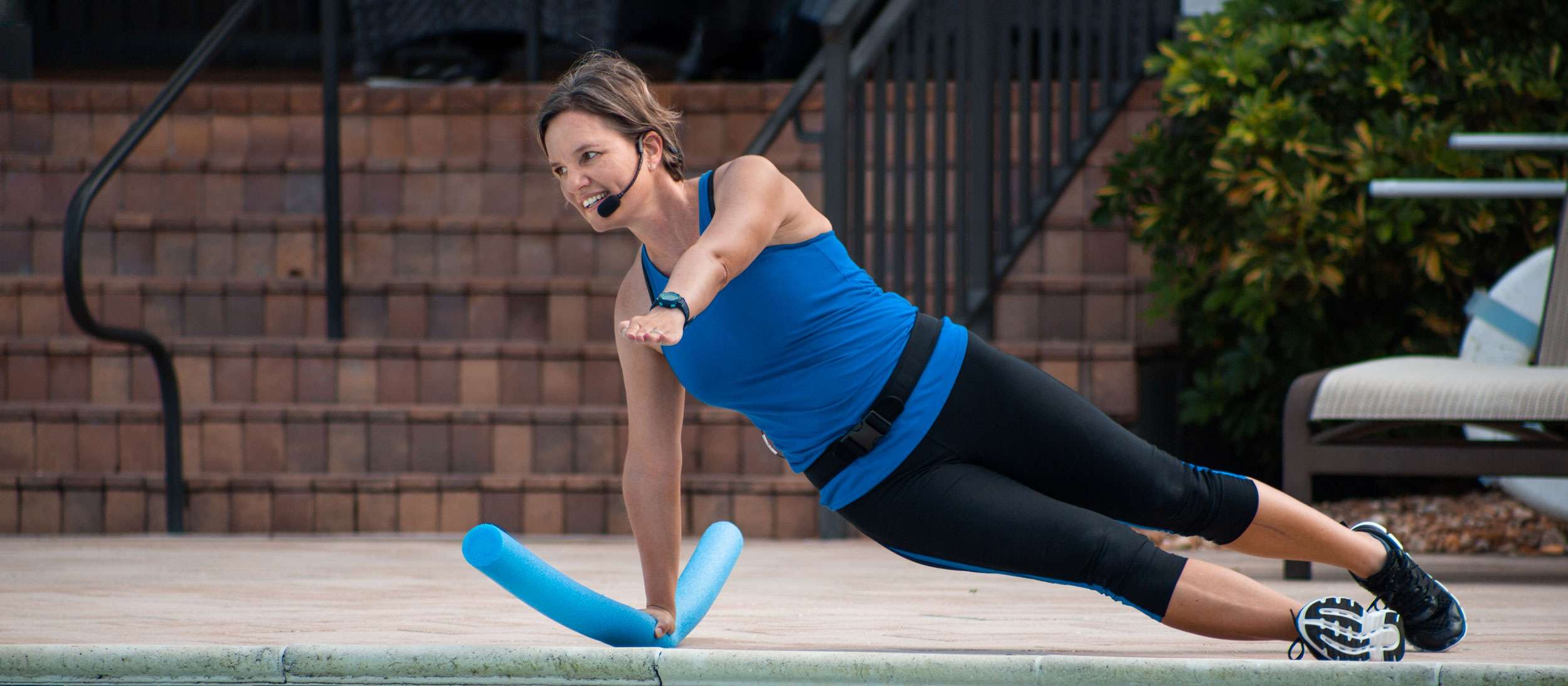Injury prevention often falls low on our list of priorities. Let’s be honest, it’s hard to get excited about preventing something that hasn’t happened yet. It’s only when pain, injury, or surgery hit that we start paying attention—those are the moments we’re motivated to get our bodies back to functioning at their best.
But what if there was a way to make the process of preventing injury fun and something you actually enjoy? Enter: water exercise.
The mindset shift
When you’re in the pool, try to have the shift from the “I have to do this” mindset to “I want to do this.” Once you’ve shifted your perspective around your workouts, the hard part is no longer dragging yourself to the pool, it’s making the most of your time once you’re there.
Luckily, there’s a simple formula that makes every water workout count. By following just three basic strength training rules, you’ll be building a stronger, more mobile body that’s prepared to prevent injury before it ever happens.
The 3 Rules for Injury-Resilient Strength Training

To get results, you need a method that works. Here are the three essential rules for effective strength training that will get you feeling stronger and more mobile:
1. Overload
To improve strength, you need to challenge your body with more stress than it’s used to. This doesn’t mean pushing yourself to exhaustion, but it does mean applying overload to your muscles, heart, or lungs. If you don’t challenge the body, it has no reason to adapt or get stronger.
2. Specificity
You only get better at what you specifically train. For example, if you want to build lower body strength, you need to do exercises that target your legs, like squats. But squats won’t do much for your arms, right? Specific exercises build strength exactly where you need it.
3. Variability
Variety is key. The body needs to be consistently challenged with new movements and different levels of intensity to continue improving. Mix it up! Try different exercises, change your pace, or adjust the resistance. This keeps your muscles guessing and growing.
Combining strength and endurance for real-life results
Now that you understand the basic principles of strength training, how can you apply them to everyday movements? One of the best ways to build functional strength is to combine endurance work with strength training. Think of it as training your muscles to not only be strong but also resilient enough to keep going.
This is particularly important for real-life situations. Take, for example, something as simple as getting in and out of a chair. This action requires both strength and speed (also known as power). It’s not enough to build muscle; you need to be able to use it quickly and efficiently.
For people dealing with conditions like arthritis, this may sound intimidating, but it’s exactly what’s needed. Even if you’re in an arthritis-focused class, you should be working at the highest level of intensity that’s appropriate for you. The goal is not to avoid exertion but to train your body to work powerfully and efficiently at the level you’re at.
Teaching your body to feel different levels of intensity
To get the most out of your workouts, you need to be intentional about your effort. That means understanding what each level of intensity feels like in your body. Low intensity might feel like gentle stretching, medium intensity like your heart rate is rising, and high intensity will have your muscles working harder but not to the point of exhaustion.
The more you practice this awareness, the easier it becomes to know when you’re truly challenging yourself. And remember, injury prevention isn’t just about working hard—it’s about working smart.
Making water workouts fun and effective
The beauty of water exercise is how naturally it fits into these principles. The water’s resistance creates natural overload, while the freedom to move in multiple directions allows for variety and specificity. Whether you’re working on hip mobility (like we talked about in the last blog) or building strength to get out of that chair with ease, water offers the perfect environment to safely push your body.
By consistently following these three strength training rules, you’ll be well on your way to a stronger, more mobile, and injury-resilient body. So, next time you step into the pool, remember: the real goal isn’t just to move—it’s to move with purpose.
The takeaway
Injury prevention doesn’t have to be a chore. With the right mindset, water exercise can become something your body loves and needs. By applying the principles of overload, specificity, and variability, your workouts will go from routine to result-driven, building the kind of strength and mobility that keeps you active and injury-free for the long haul.
